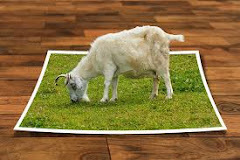Photoshop 3D Modeling Guide - Step By Step
Photoshop is a powerful image editing software that also includes basic 3D modeling capabilities.In this blog we are see the Photoshop 3D Modeling Guide With Photoshop's 3D tools, users can create basic 3D shapes such as spheres, cones, and cubes, and then manipulate and texture them to create more complex models. The software also allows users to import 3D models from other software programs, and then apply textures, lighting, and other effects to create a more realistic look. While Photoshop's 3D modeling capabilities are not as advanced as dedicated 3D modeling software, they can be a useful tool for creating simple 3D objects or adding 3D elements to 2D images.
Photoshop 3D Modeling Guide - Step By Step
3D modeling in Photoshop allows you to create three-dimensional objects that can be used in a variety of ways, such as product design, game development, and animation. Here are the steps to create 3D models in Photoshop:
Step 1: Prepare your workspace
Before you start, you need to set up your workspace. Go to the menu bar and click on ‘Window’ and select ‘Workspace’. Here, you can choose the ‘3D’ workspace.
Step 2: Create a new document
Next, create a new document by going to ‘File’ and selecting ‘New’. In the dialog box that appears, you can set the size of the canvas and other settings. Once you have set up the document, click on ‘Create’.
Step 3: Add 3D layers
To add 3D layers, go to the Layers panel and click on the ‘Create a new layer’ button. Then, select ‘3D Extrusion’. This will create a 3D object on your canvas. You can use the Properties panel to adjust the extrusion depth, bevel, and other settings.
Step 4: Edit the 3D model
You can edit the 3D model using the 3D tools available in the toolbar. The most commonly used tools include the Move, Rotate, and Scale tools. Use these tools to adjust the position, orientation, and size of the 3D object.READ MORE: How to Make Digital Art in Photoshop In just 2 Minutes in Year 2023
Step 5: Apply textures
To apply textures to your 3D model, go to the Layers panel and select the 3D layer. Then, go to the Properties panel and select ‘Materials’. Here, you can choose a material from the presets or create a custom material. You can also adjust the settings for the material, such as the diffuse, specular, and ambient color.
Step 6: Add lighting
To add lighting to your 3D model, go to the Layers panel and select the 3D layer. Then, go to the Properties panel and select ‘Lights’. Here, you can choose a preset or create a custom light. You can also adjust the settings for the light, such as the intensity, color, and position.
Step 7: Render the 3D model
To render the 3D model, go to the Layers panel and select the 3D layer. Then, go to the Properties panel and select ‘Render’. Here, you can choose the quality, size, and format of the output. Once you have set up the rendering settings, click on ‘Render’.
Step 8: Export the 3D model
Finally, export the 3D model by going to ‘File’ and selecting ‘Export’. You can choose a format, such as OBJ or Collada, and set up the export settings. Once you have set up the export settings, click on ‘Export’.
Tips for 3D modeling in Photoshop:
Use the Properties panel to adjust the settings for your 3D model, such as materials, lights, and rendering.
Use the 3D tools in the toolbar to edit the position, orientation, and size of the 3D object.
Use textures to add detail and realism to your 3D model.




Comments
Post a Comment